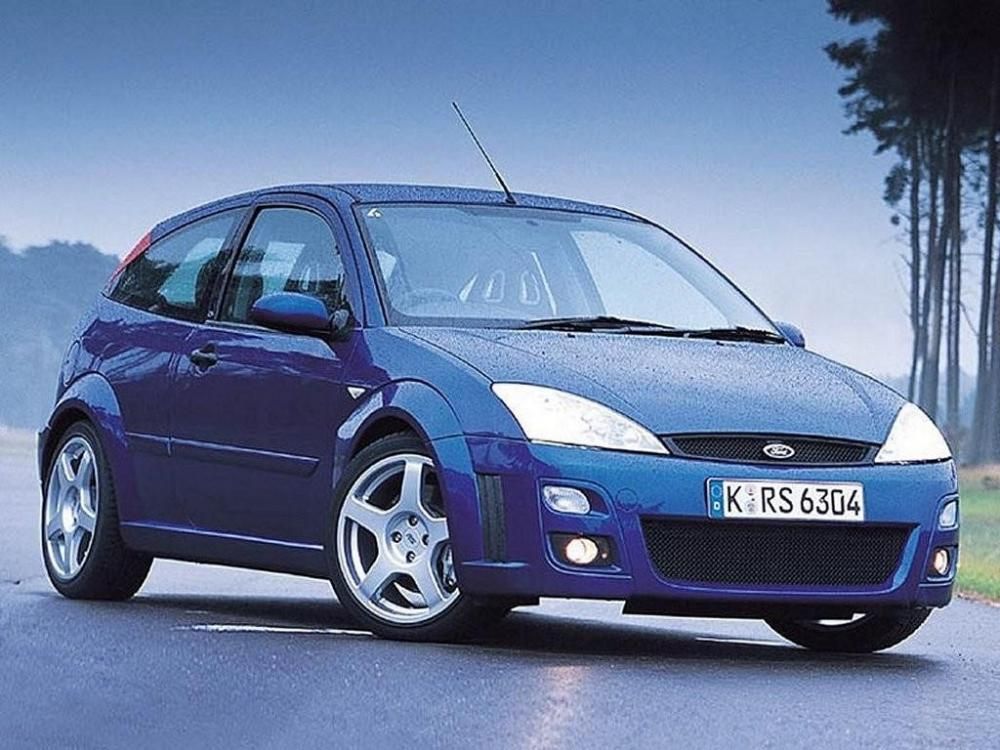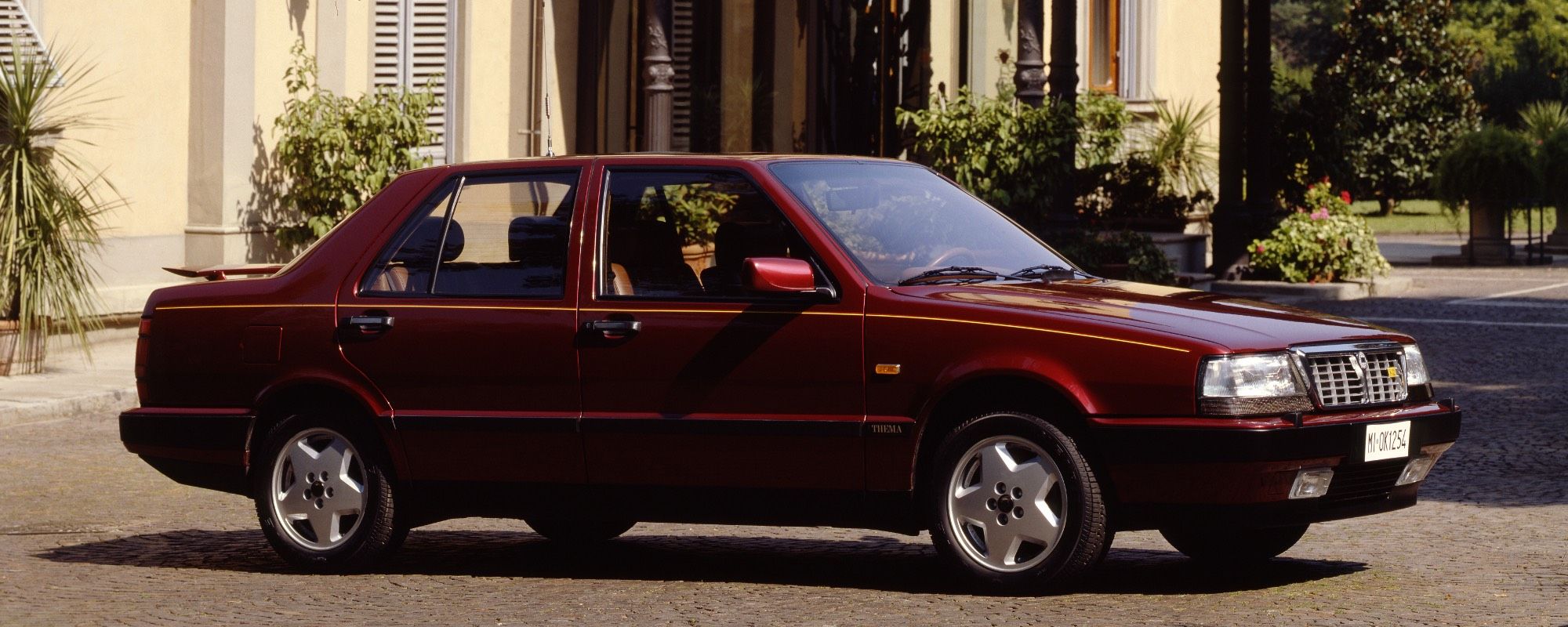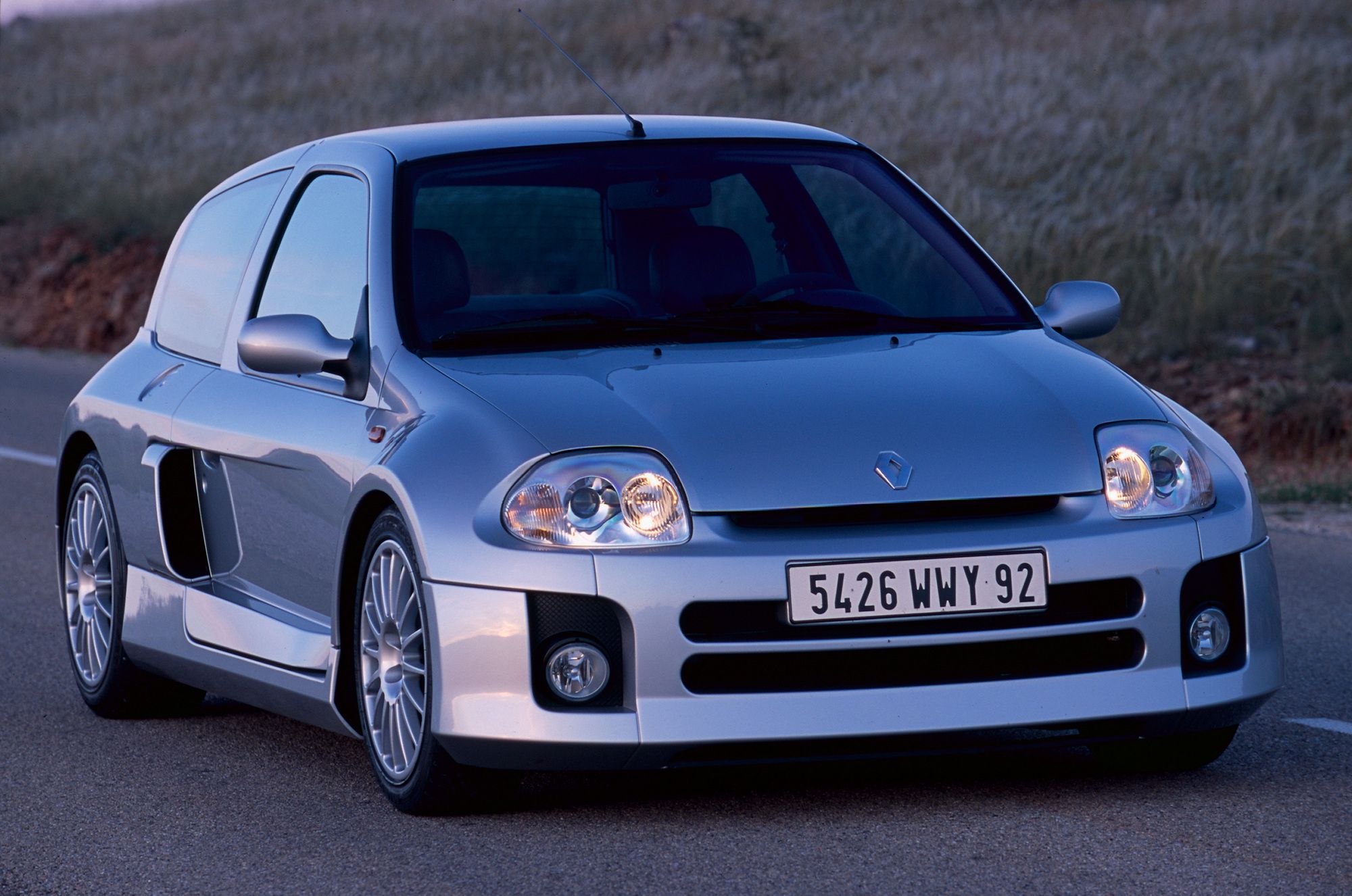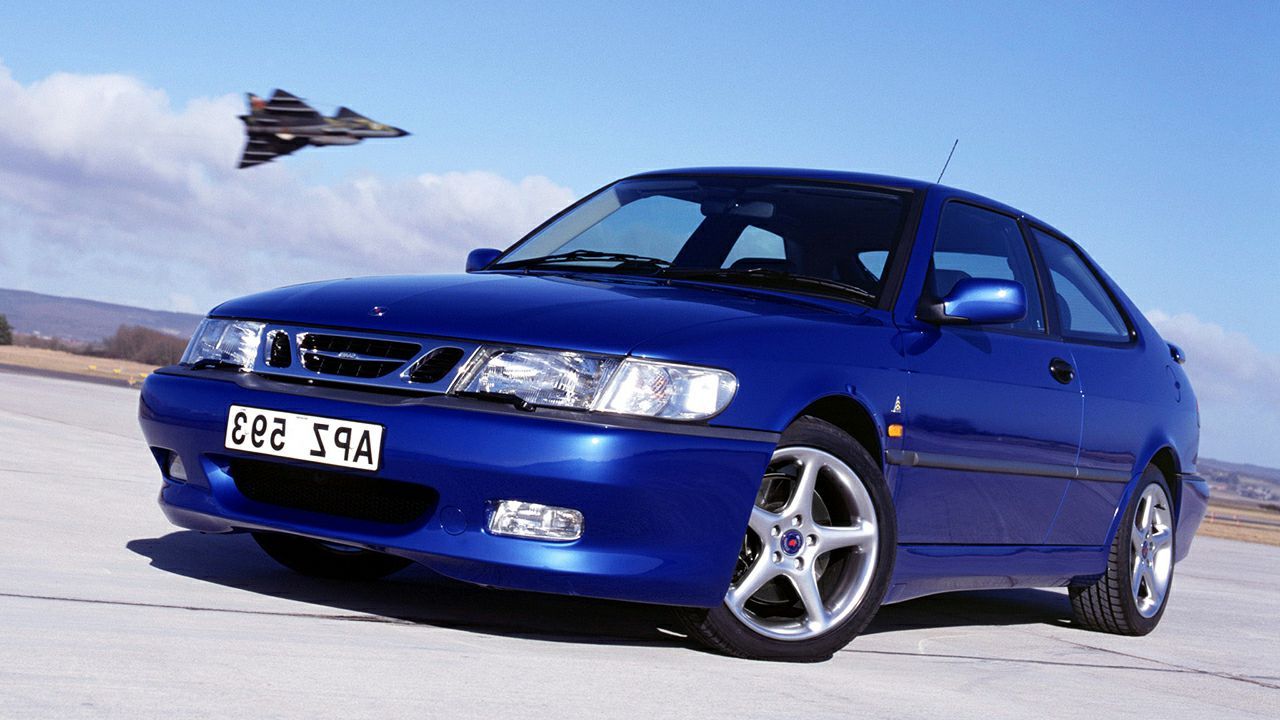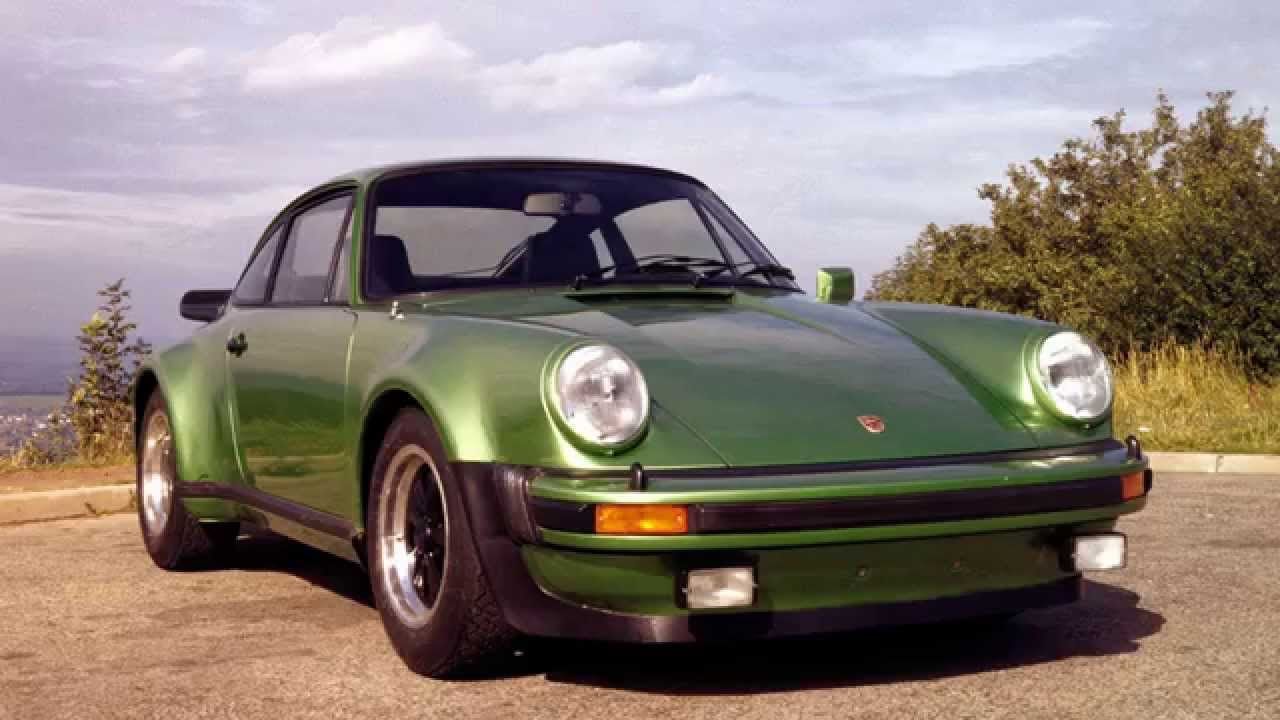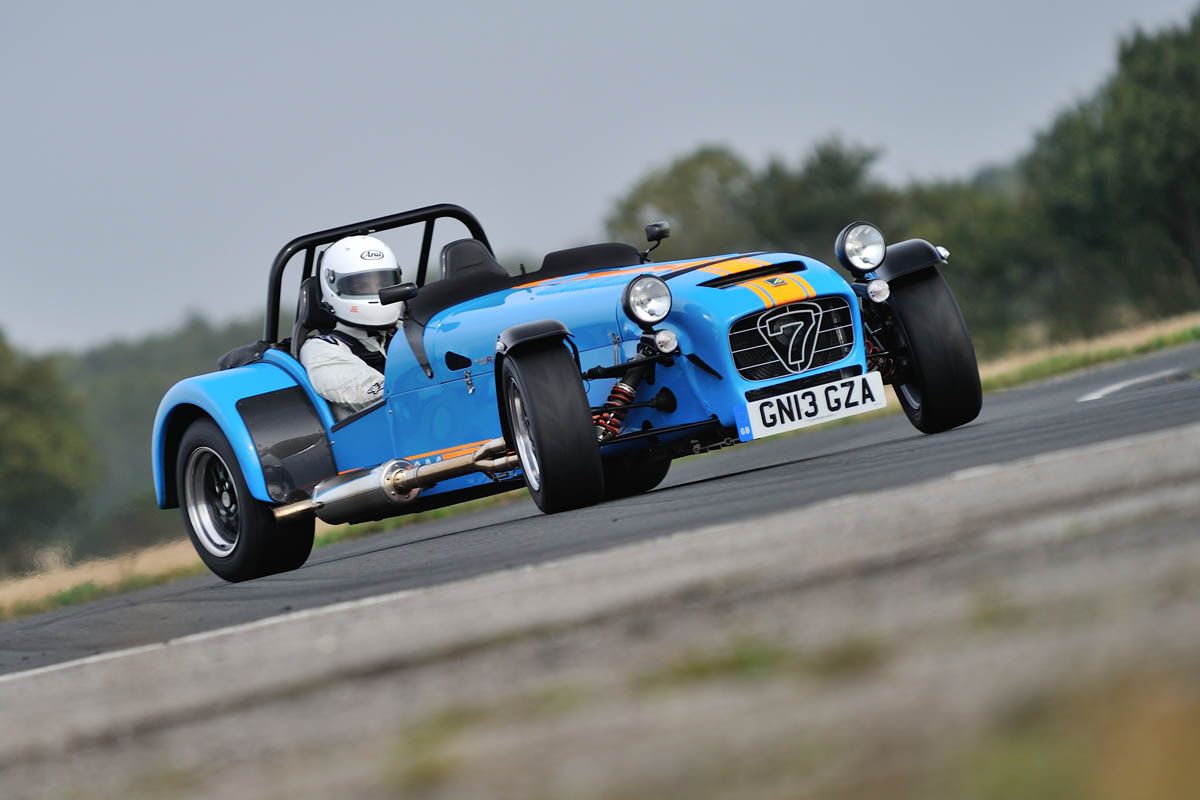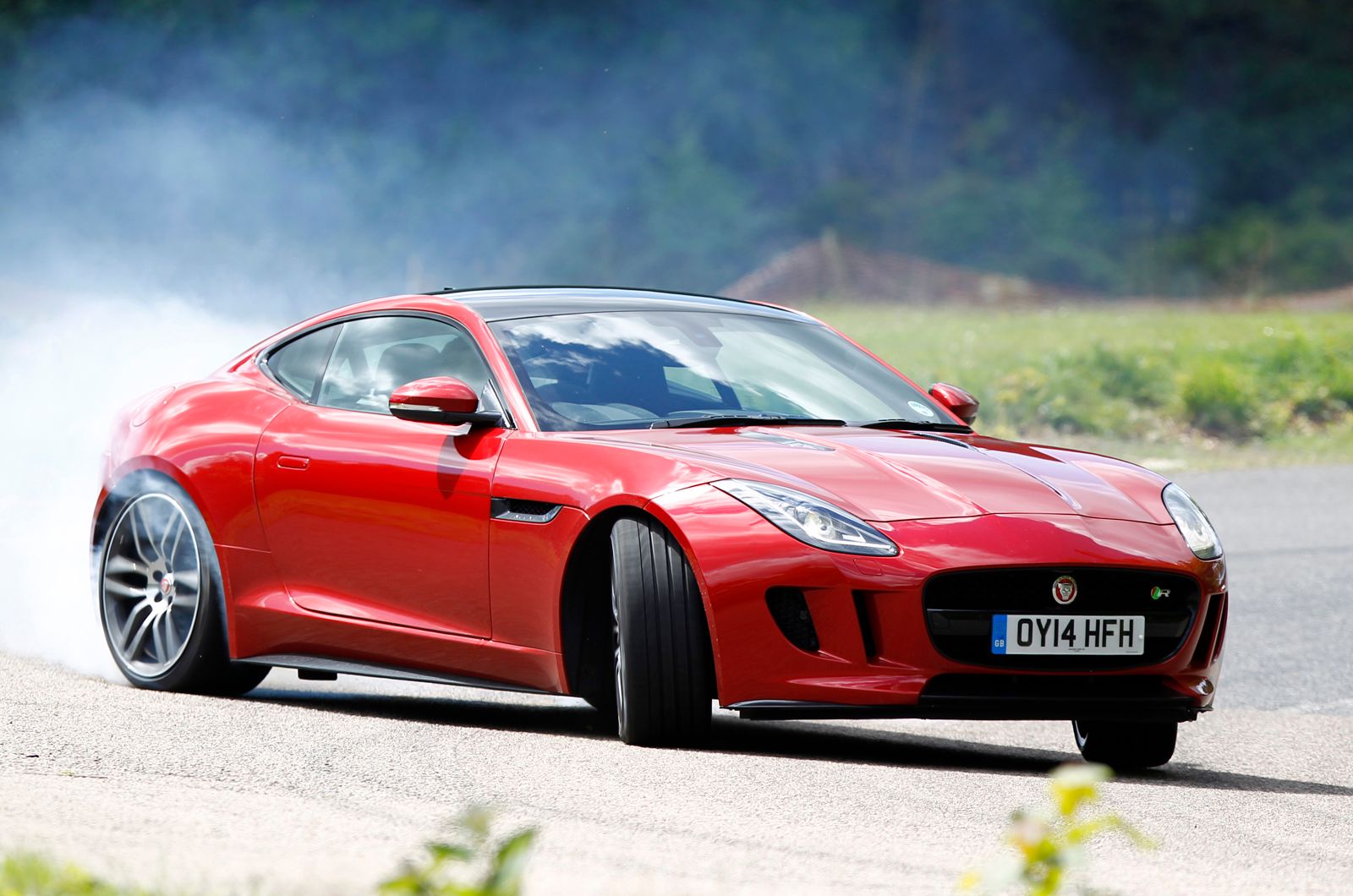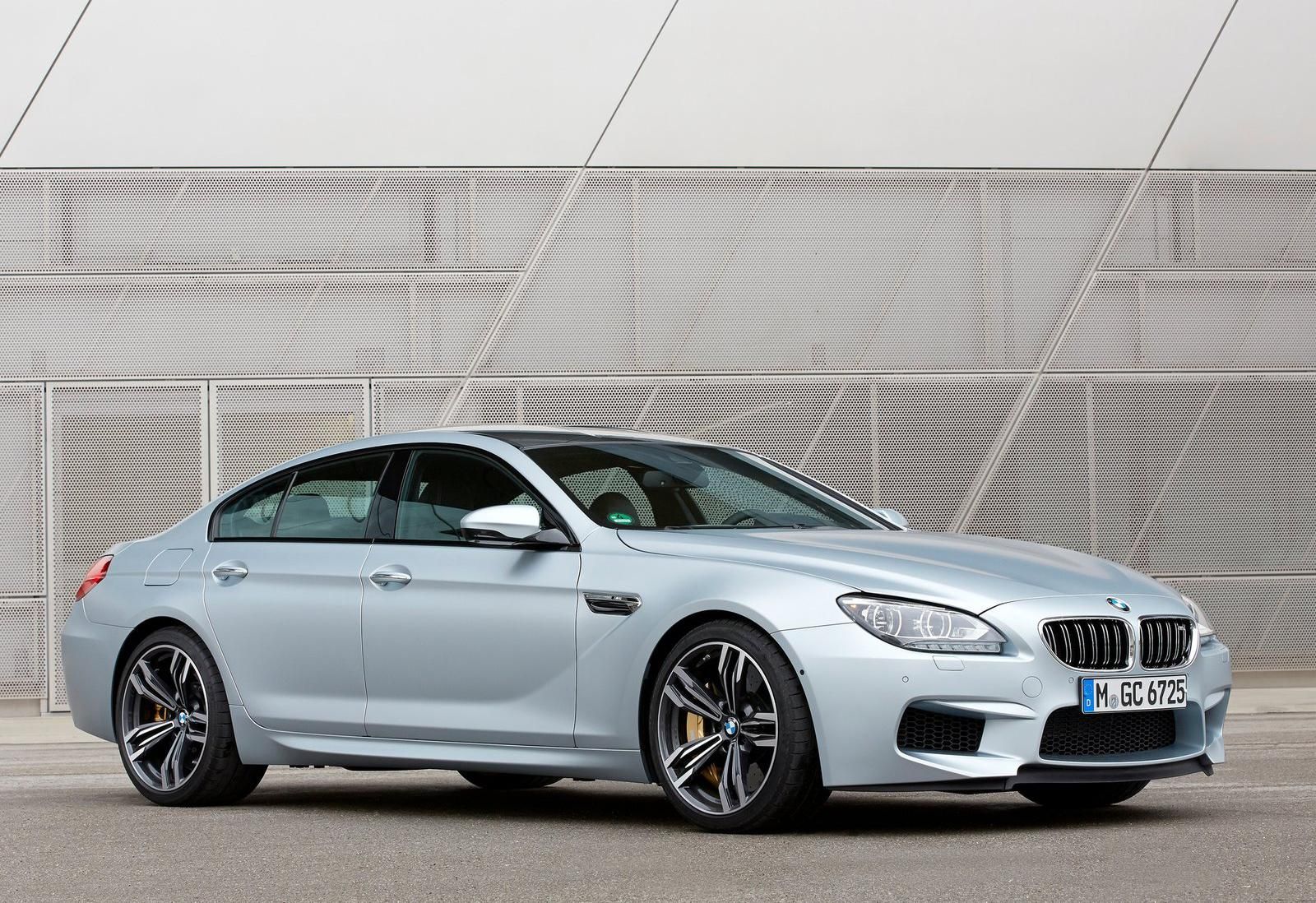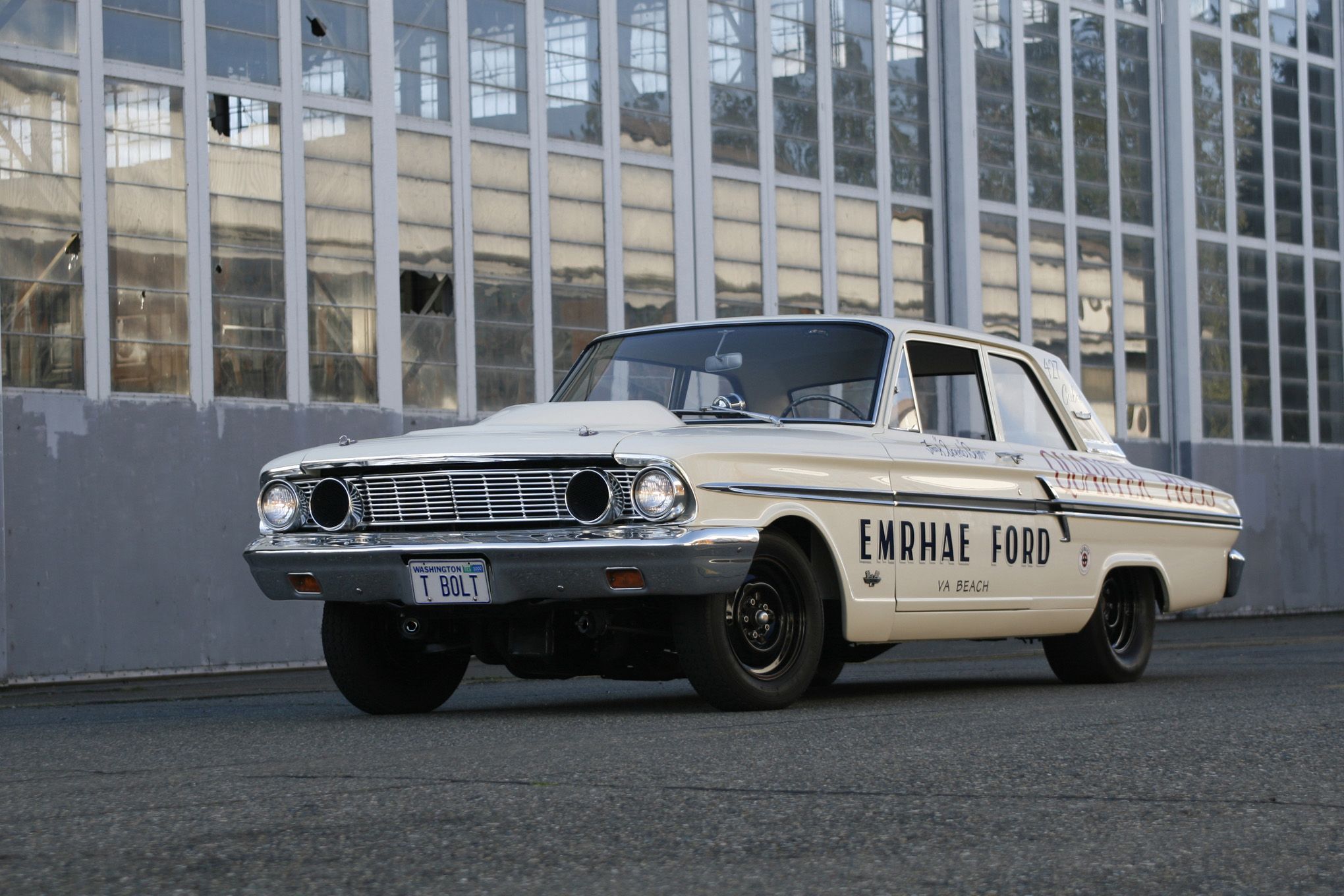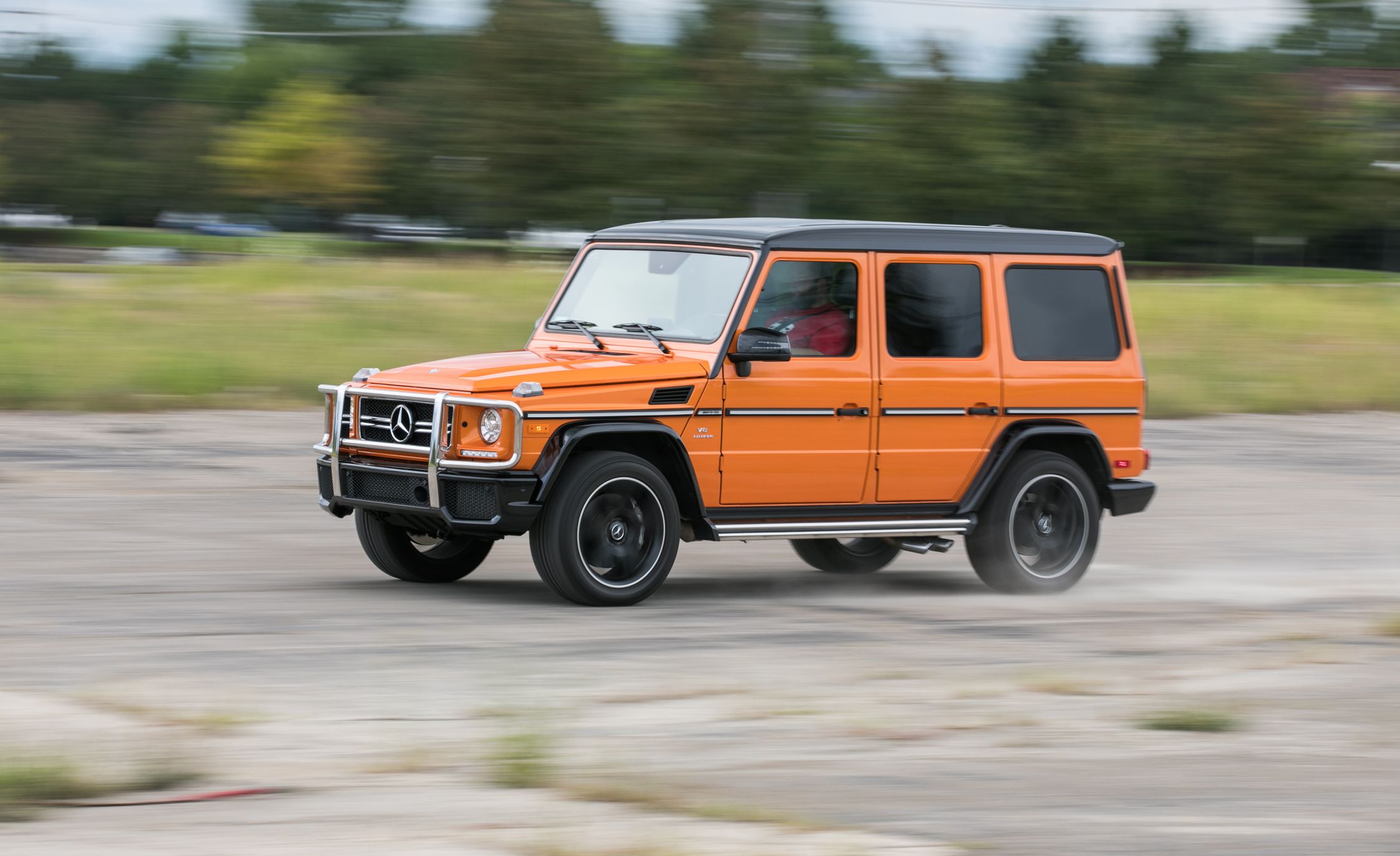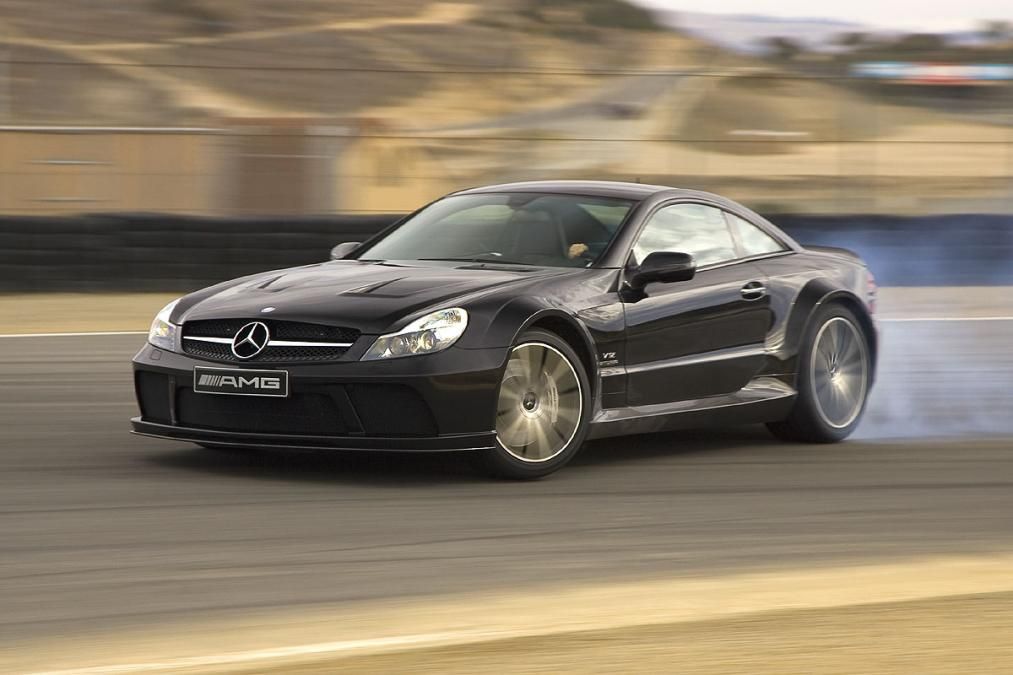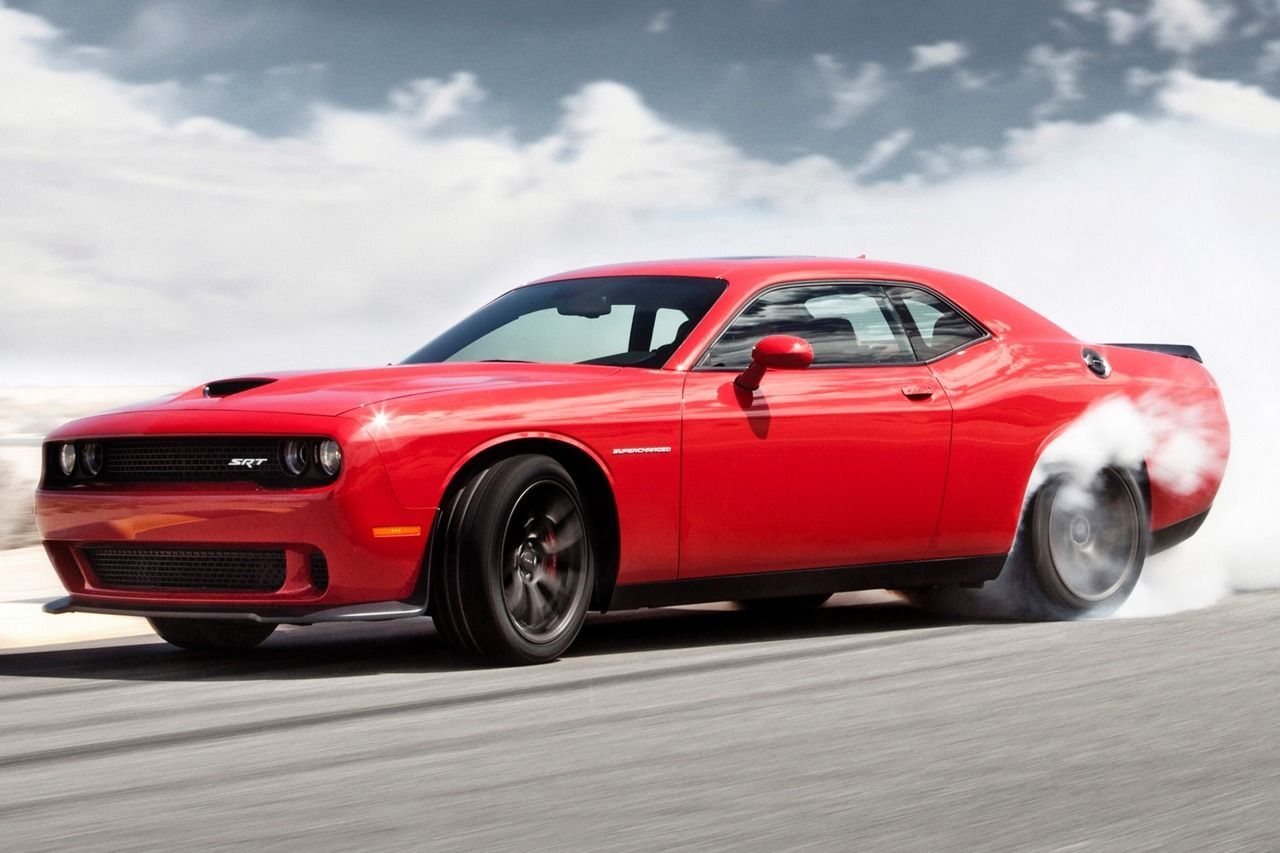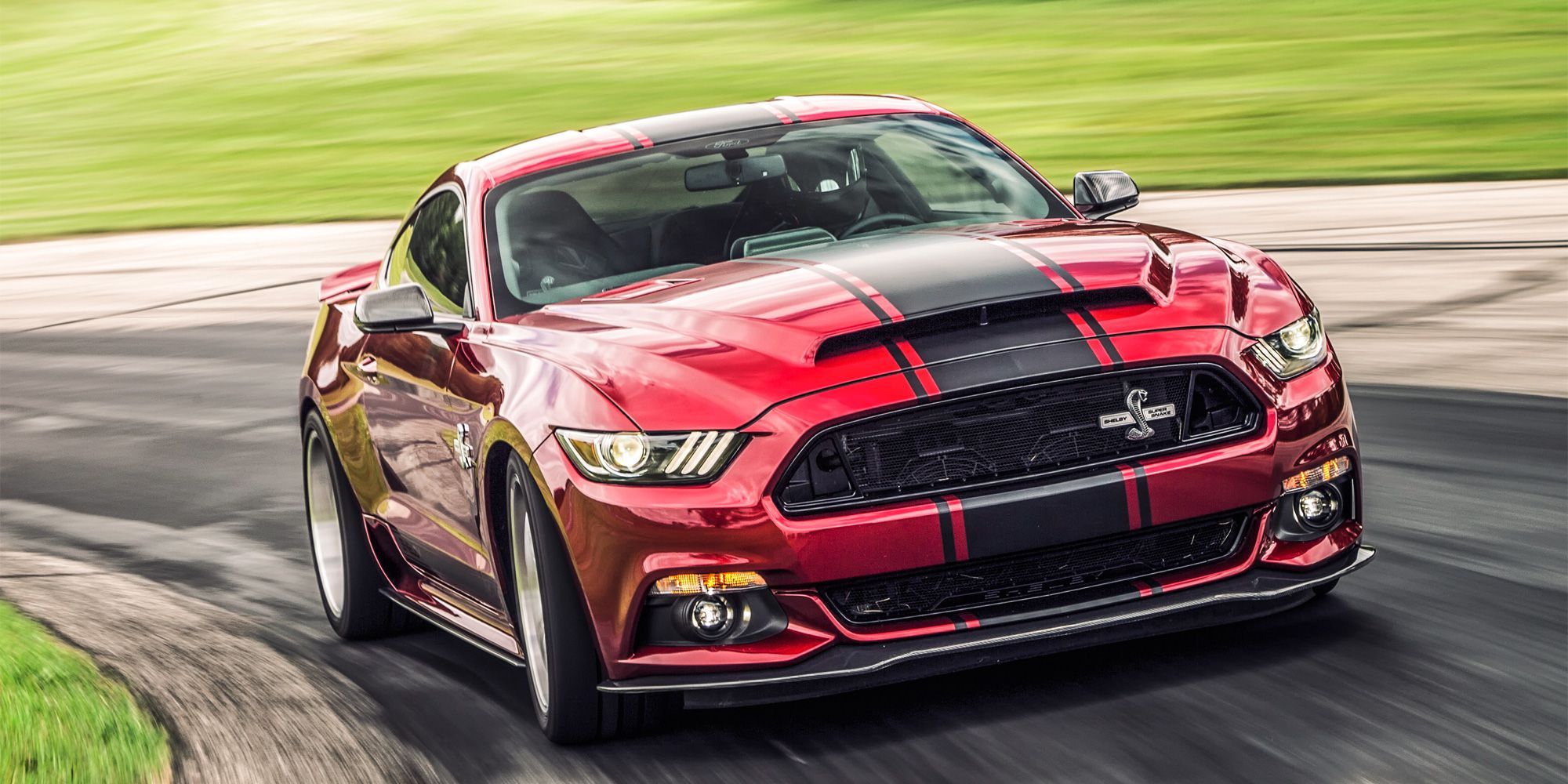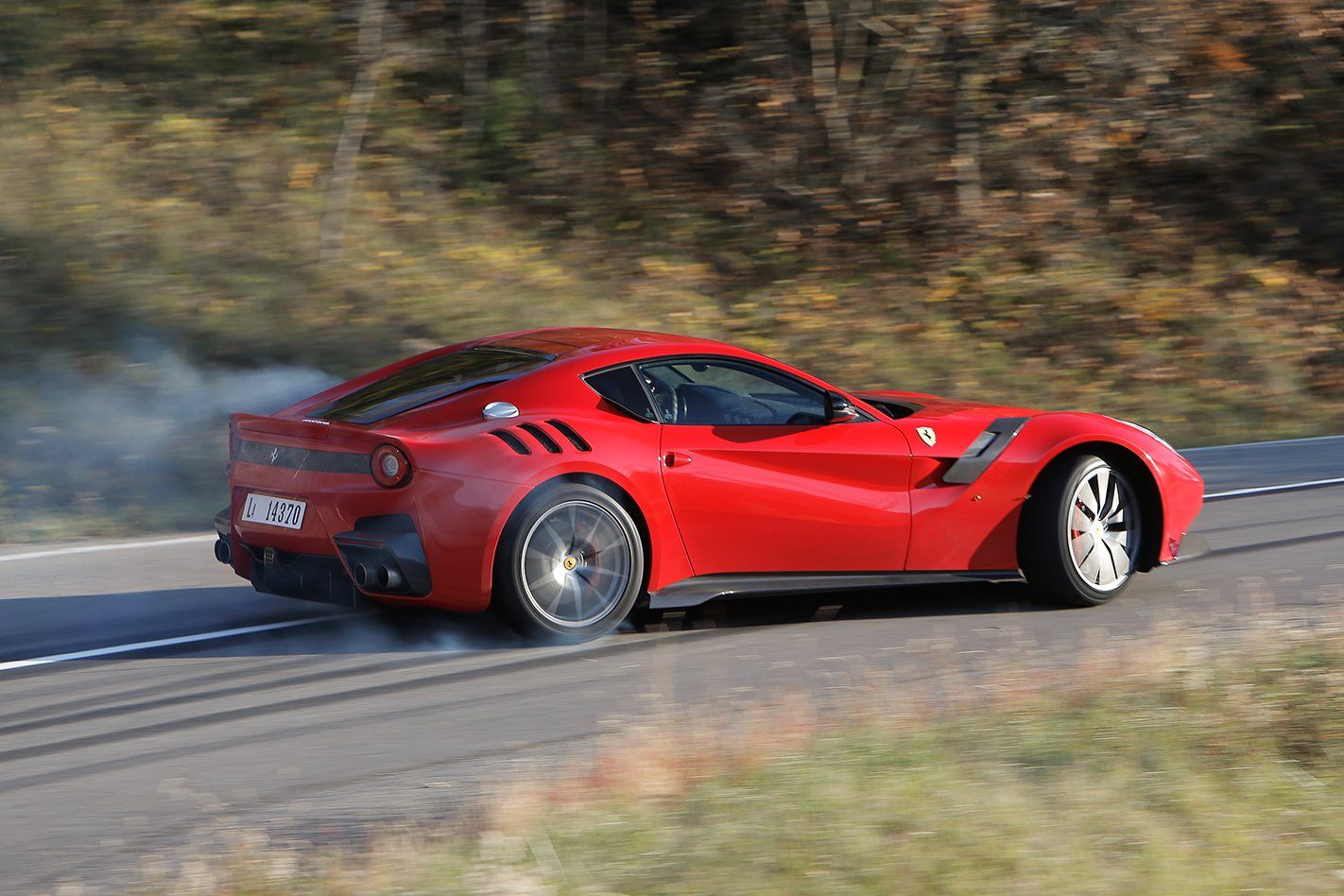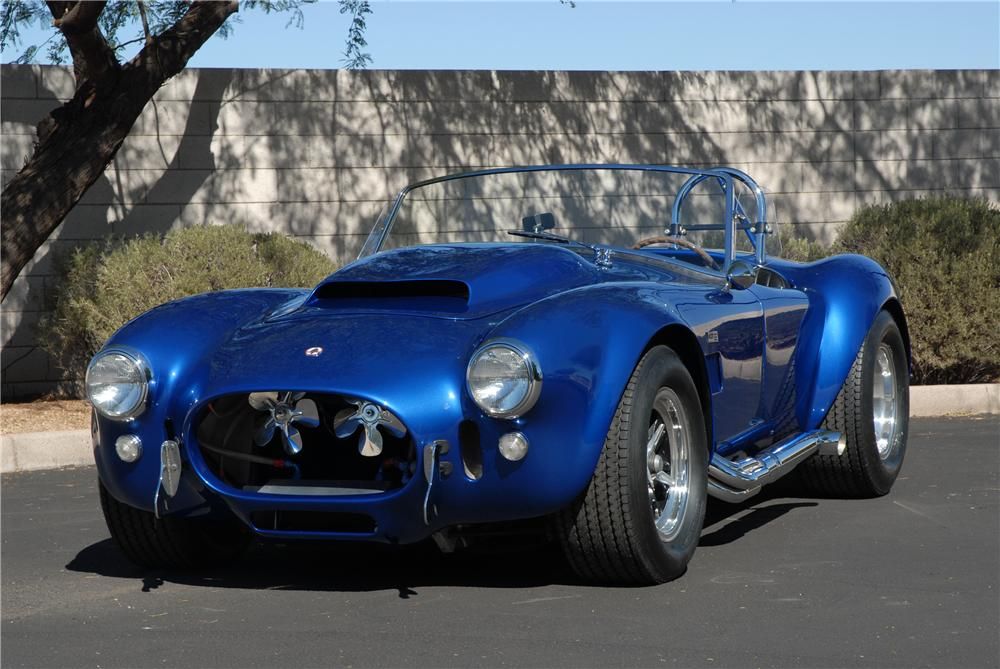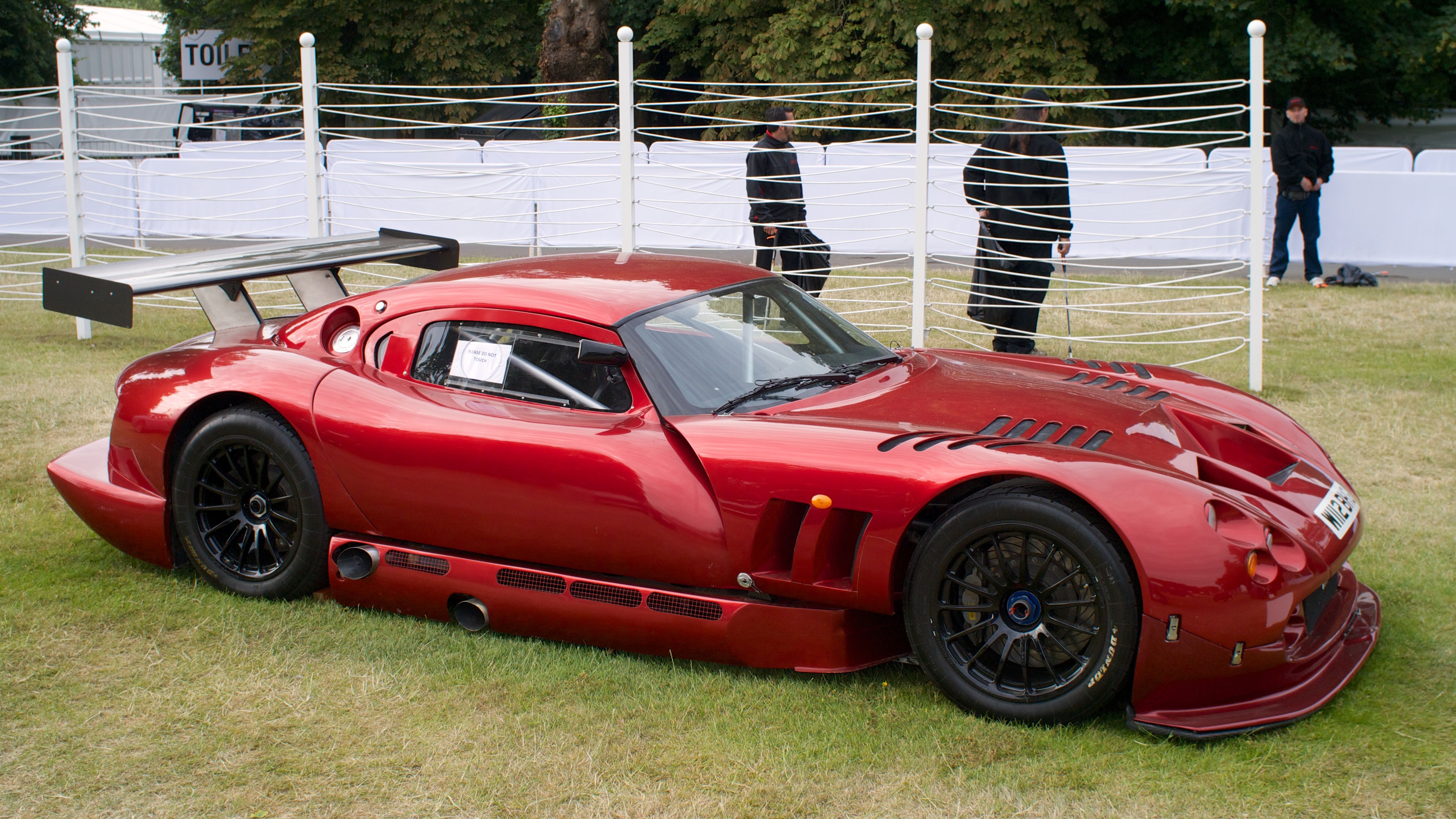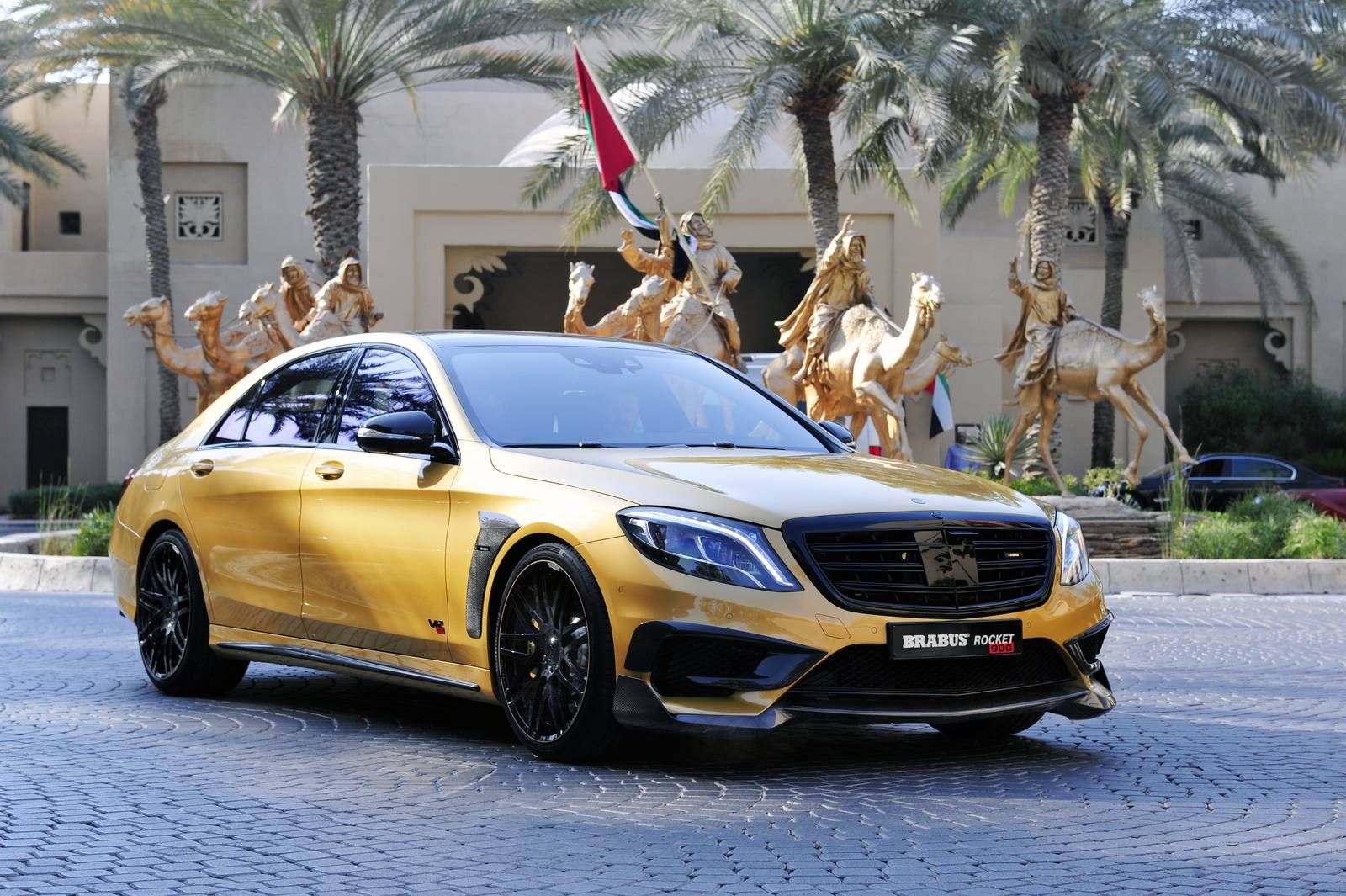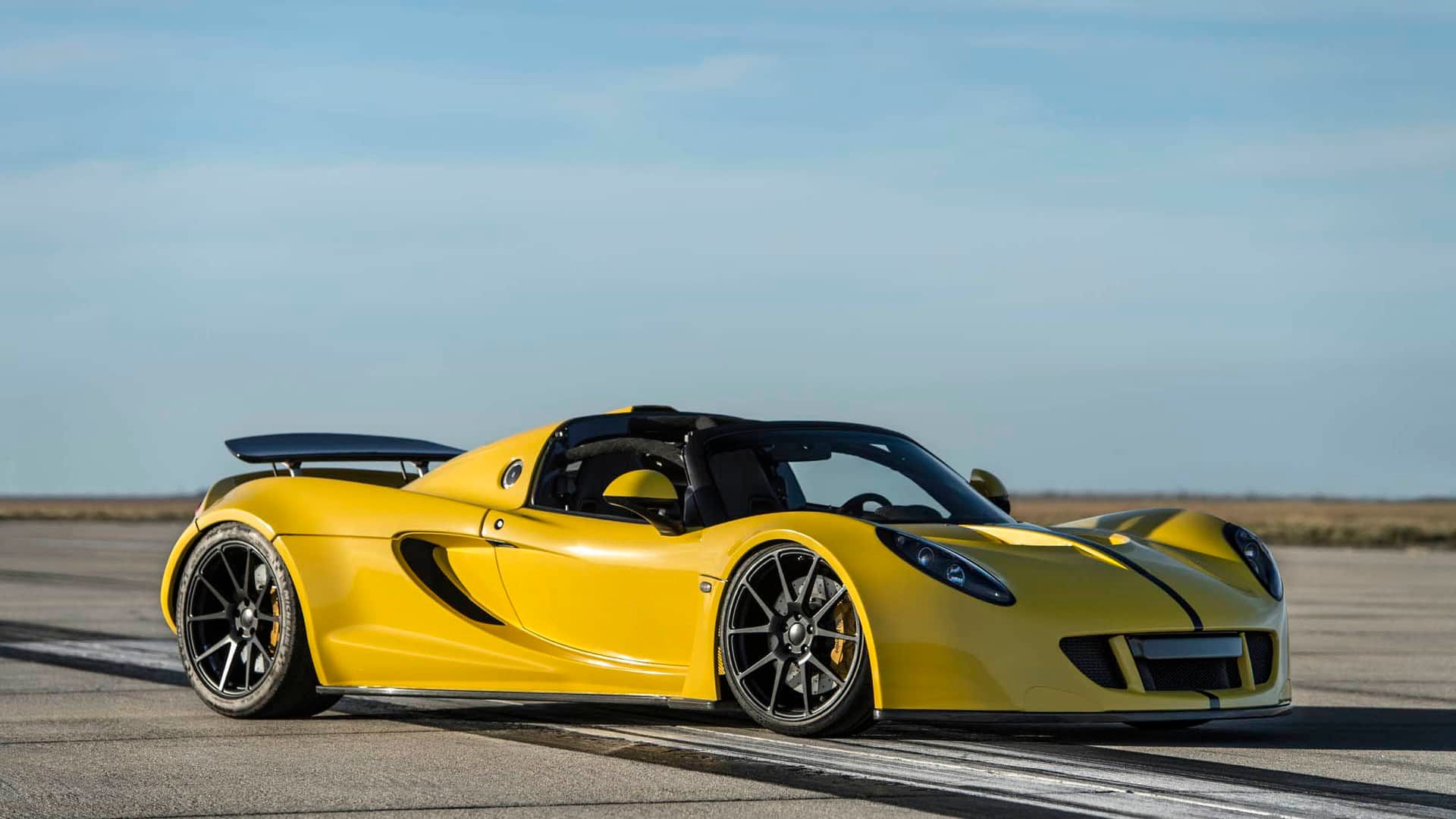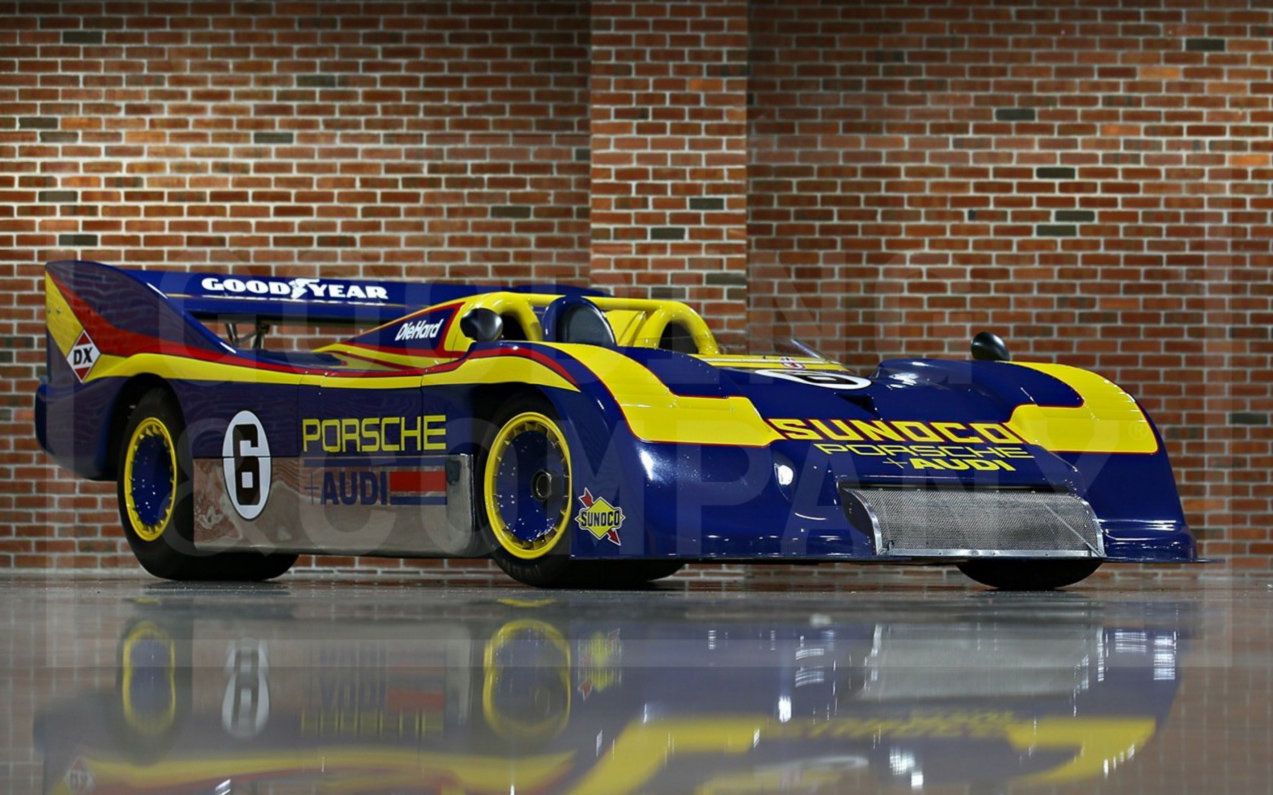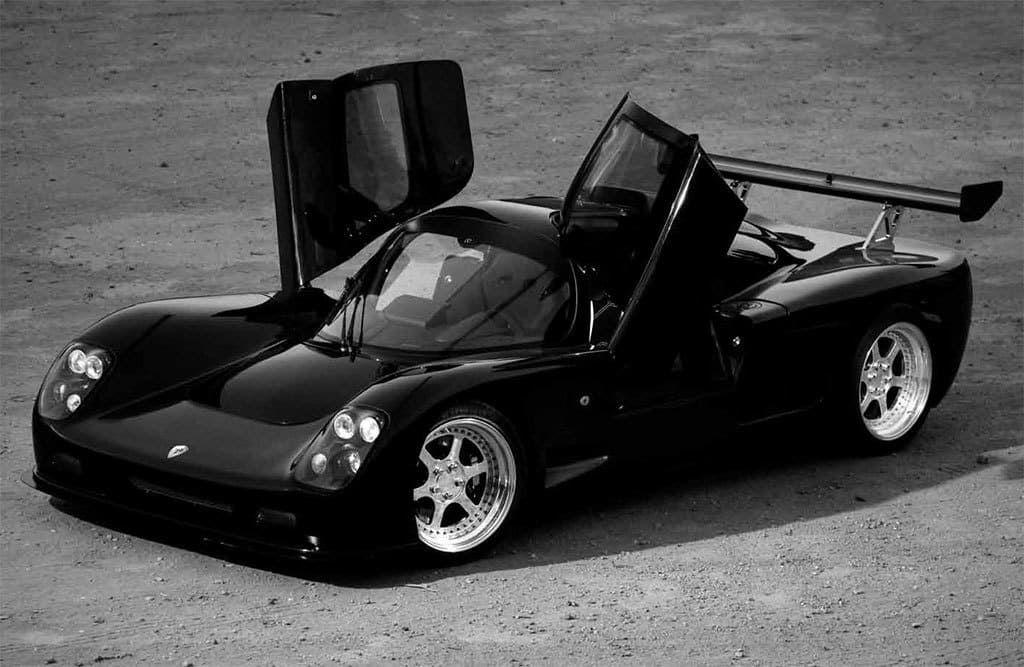How do you define the word 'overpowered' in a car? Alright, I can already sense a few manly men rolling their eyes and saying, "There's no such thing as too much power." Well, if you lay off the 'roids for a second and use your brains, ask yourselves: would you really want to, each day, drive a car whose performance you can barely poke at for fear of immediately bursting into flames? Or whose sheer muscle actually compromises the car in ways that make it way worse to drive?
For me, the word 'overpowered' simply means that engineers dedicated most of their time to giving the car as much power as possible, and to hell with reliability, handling, or driveability. No doubt, there are plenty of muscle cars from the 1960s that fit this definition, but that's too easy. No, there are plenty of modern vehicles out there that sacrificed plenty just for country-club bragging rights.
We'll rank these cars in ascending order of power figures, so if you want to get to the really juicy stuff, I guess you can skip to the end. I don't recommend it, though: everything here is crazy in its own unique way.
20 Ford Focus RS – 212 HP
Today’s Ford Focus RS is the doyen of every wannabe Ken Block. I mean, it lets you cosplay pretty accurately. Its advanced all-wheel-drive system features an actual drift mode, and one of the factory options is a honking-great handbrake lever for any on-demand sideways action. This wasn’t always the case. North American consumers never had the chance to drive the previous two generations of Focus RS, both of which were front-wheel drive only. While the second-generation car, launched in 2009, was lauded as being exceptionally well-behaved for a front driver with 300 HP, Ford’s first attempt was a bit of a hot mess, even with a comparatively diminutive 212 HP output from a turbocharged 2.0 liter inline-4 (212 HP in a hot hatch was a big deal in 2002).
Noted auto journalist Jeremy Clarkson blamed handling woes on a front differential that really wasn’t up to the task and summed things up in his usual style: “You got a ton of torque steer when you set off, then the steering system would jam, and then you’d hit a tree, fly through the windscreen, and be killed. Technically, engineers called the system ‘s***’.”
19 Lancia Thema 8.32 – 212 HP
If there was any car that summed up the ethos of not judging a book by its cover, it’s the Thema 8.32. Pop the hood on this boxy Italian sedan, and you won’t find a turbocharged inline-4 or even a big-hearted ‘Busso’ V6 from Lancia’s cousins over at Alfa Romeo. Instead, the first thing you’d notice would be the bold red stripe running across the engine cover, emblazoned with the motif “LANCIA by Ferrari.” Those 3 words, along with the 8.32 badge, would tell you everything you need to know: the latter set of numbers counts pistons and valves, respectively, while the former tells you the powerplant’s provenance.
The car's 2.9-liter V8 was originally used in the Ferrari Mondial but was subsequently modified for Thema’s front-engine, transverse chassis layout.
That’s right—because a Ferrari-powered sedan isn’t nutty enough; it had to get that power to the ground solely through the front wheels. When it was released in 1986 with an asking price of £40,000 (that’s around $150,000 USD when adjusted for inflation), it was one of the fastest, most exclusive four-doors to have ever hit the road.
18 Renault Clio V6- 227 HP
The idea of a mid-engined French hatchback is a terrifying proposition, especially when you consider the fact that the country seems to have a monopoly on the idea: look at the Renault 5 Turbo or Peugeot 205 T16 Group B homologation special for evidence of this bizarre automotive cultural phenomenon. The Clio V6 keeps up this tradition, and the first-gen car was regarded as an exotic, hilarious, but very sketchy drive, mostly thanks to its short wheelbase and heavy engine. Evo's Richard Meaden found it to be quite snappy: "[in] the split-second it takes to register with your brain, your palms already need a wipe on your thigh and you know you've only got one chance to gather things up. This isn't a car to take liberties with through high-speed corners."
17 Saab 9-3 Viggen – 230 HP
Before Saab started churning out bland retreads of crappy early-2000s GM appliances, they had a go at building a BMW M3 fighter just before the new millennium rolled around. The 9-3 Viggen (which translates to ‘Thunderbolt’, don’t cha know?) failed in this regard, but not for lack of trying. It was hamstrung by its front-wheel drive chassis that had roots in the late eighties, a stark contrast to the sophisticated platforms of its would-be German rivals.
Instead, Saab channeled its fighter jet-building legacy and tried to eliminate this parity with oodles of thrust. That meant a turbocharged 2.3 liter inline-4 pumping out 230 HP and 252 lb-ft of torque.
High, but certainly not crazy. Again though, it bears reminding that the Viggen’s basic chassis design was getting on two decades of service in low-powered econoboxes. Jalopnik writer William Clavey summed it up as such: “The car feels like it was tuned by a 19-year old car bro who doesn’t know what he’s doing.”
16 Porsche 911 Turbo 3.0 – 256 HP
Honestly, I’m not sure how much I have to talk about the 1975 911 Turbo, otherwise known as the 930. I mean, it even has a brutal nickname: ‘Widowmaker’. The heavily rear-biased weight distribution and sudden and brutal power delivery of its twin-turbo 3.0 liter flat-six meant that it was far more difficult to drive that its 250ish HP would have you believe. Besides, the 930’s low curbweight meant it could make the most of that thrust, sprinting to 60 MPH in just under 5.0 seconds, still a reasonably quick time today. Back in 1975 though, it confirmed this machine’s race-bred heritage: it was originally built for homologation purposes of the Group 5 racing series in which the legendary Porsche 935 competed.
15 Caterham Seven 620R – 311 HP
If you’re looking for a fix of the authentic classic British sports car experience, it’s hard to go wrong with Caterham. Their Seven model uses the same basic tubular space frame chassis design as the original Lotus Seven, which was first introduced in 1957. That means a De Dion rear axle design, a 1,200-ish lb curbweight and period-correct tire widths.
Engines run the gamut from parpy Suzuki three-cylinders with under 100 HP all the way to the absolute animal here, the 620R.
A supercharged 2.0 liter Ford Duratec four-cylinder with 311 HP drives the skinny 215-width rear tires through a 6-speed sequential gearbox, enough for an explosive 0-60 run of 2.8 seconds. Top Gear magazine described it as a fun but terrifying vehicle: “Full throttle acceleration on anything but the smoothest road requires a lot of concentration. Things could get very crashy very quickly.”
14 Jaguar F-Type V8 R – 550 HP
Jaguar-Land Rover’s 5.0 liter supercharged V8 has always been a bit of a sledgehammer. When the F-Type convertible was first released, some reviewers called the V8 S version a bit too much of a handful, and that the lower-powered supercharged V6 option was a sharper, more nuanced thing to hustle around. That didn’t change when Jaguar stuck a roof on their rambunctious soft-top: the V8 on offer now had 550 HP instead of the convertible’s meager 488. Over the course of an extended review, Road and Track magazine claimed that “a persistent desire to be sideways is this car's defining attribute”.
13 BMW M6 Competition Pack – 600 HP
Historically speaking, BMW’s M cars have been defined by a wonderful balance of chassis and engine: cars with the M badge have never felt over or underpowered, and allowed their drivers to extract as much performance as their talent allowed. Unfortunately, some of their more recent products have disturbed that almost mythical sense of yin-yang. Consider the M6 Gran Coupe Competition Pack.
On the surface, it's a sleek luxury cruiser packing a 600 HP punch from a twin-turbo 4.0 liter V8, the sort of car BMW’s been building for decades, just heavier and more powerful.
Unfortunately, it seems that BMW overegged the mixture. Evo magazine’s Will Beaumont, an experienced auto journalist with plenty of seat time in vehicles with much larger power outputs, called it one of the scariest cars he’s ever driven: “Wheelspin was constant and it meant the car’s angle to the road wasn’t dictated by the steering wheel, rather by gravity sucking the slipping back end down towards the lowest part of the road.”
12 Ford Fairlane Thunderbolt - 600 HP
The Thunderbolt was one of the first drag-racing specials to have been released by a major automaker. It left a serious impression. The year was 1964, and Ford was seeking to experiment with some cutting edge powertrain technologies. The company decided to wedge a 7.0 liter V8 engine from a full-size Galaxie sedan into one of their mid sized platforms, the Fairlane. Two four-barrel Holley carburetors, a host of strengthened internals, and a sky-high 13.5:1 compression ratio brought power to around 600 HP, a ludicrous amount today, and scarcely believable back then. Weight-saving was taken to a fanatical level: most exterior parts were made of fiberglass, the interior was totally stripped, and its high-beams were removed and turned into air intakes. All this gave it absolutely insane straight-lie performance: a factory-built Thunderbolt ran the quarter mile in just 10.365 seconds back in 1967. For reference, that's faster than a Ferrari 488, Lamborghini Aventador SV, and even youtube drag-race darling Tesla Model S P100D.
11 Mercedes-AMG G65- 621 HP
The basic Mercedes-Benz G-Wagen, or Geländewagen (which is German for “cross country vehicle”) is a legacy off-road vehicle for the brand, much like what the Defender is to Land Rover or what the Wrangler is to Jeep. It’s been used by armies, adventurers and researches from around the world since the 1970s. Most overseas markets buy G-Wagens in stripped- out form, with a torquey diesel engine mounted under the stubby front hood. For whatever reason though, North-American consumers refuse to buy this thing in any other form than a V8-powered hot rod with side exit exhausts. That was taken even further into absurdity when the G65, powered by AMG’s venerable twin-turbocharged V12, swaggered onto the US market in 2015.
Power comes in at a staggering 621 horsepower and 738 lb-ft of torque, enough to get this $224,000 bus to 60 MPH in just over 5 seconds and on to an electronically limited top speed of 143 MPH.
Car and Driver’s Jens Meiners found this to be a good thing as, “[at] that speed, the chassis will put the fear of God into you.”
10 Mercedes-Benz SL65 Black Series – 670 HP
More recent generations of the Mercedes-Benz SL have garnered a bit of unfair reputation of being the de facto ride for dentists and high-end hairdressers. I’ll be honest though; I really wouldn’t mind having one in my garage. In SL500 trim for instance, it’s a sleek and relaxed grand-tourer with reassuringly bombproof air of implacability. However, back in 2009, the madmen from Affalterbach, part of AMG’s scarily-named Black Series division, got to work on turning this boulevard cruiser into a high-tech German exotic.
The result was the SL65 Black Series, which dropped a monstrous twin-turbocharged 6.0 liter V12 into a body that was lightened by over 500 pounds and given a DTM-refugee carbon fiber body kit.
The engine’s torque output was so beastly that the car was hamstrung by its transmission: Mercedes was forced to stick with an antiquated, slow-shifting 5-speed slushbox instead of their then-new 7-speed semi-auto gearbox for fear of blowing it to pieces.
9 Dodge Challenger Hellcat - 707 HP
It wouldn’t be a list of overpowered cars without mentioning one of the most infamous muscle cars of the 21st century. The Hellcat essentially fits our definition of ‘overpowered’ to a T: 90 percent of the engineer’s focus went to extracting 707 reliable horses from a 6.4 liter supercharged V8, while barely any lip-service was paid to getting it to go around a corner. Look at the standard tire size for proof. Whoever thought mere 275 width rear tires would be sufficient to channel that prodigious muscle while hustling almost 4,500 lb worth of Americana should be forced to daily drive a Hellcat on the country’s narrowest roads during hurricane season. That seems to be why the driver's choice of Hellcat is the Widebody, which puts meaty 305-width rubber at all four corners.
8 Shelby Super Snake – 750 HP
If you can't tell by now, Shelby Automotive isn’t in the business of building slow cars. So, when the company announced that they were working on a new car carrying the Super Snake moniker in 2015, people had certain expectations. Chief among them being that it could easily outrun Dodge’s then-new Challenger Hellcat. On the surface, this seems a reasonably easy task: the Super Snake badge had been affixed to Shelby-tuned Mustangs since 1967, and the Texan tuner was working with a platform that was much lighter than Dodge’s heavyweight bruiser with even more power.
Unfortunately, it seems that those extra ponies were causing more harm than good, and ultimately meant it was slower across the quarter mile than the latter.
As per Colin Comer from Road and Track “[…] the car's 12.3-second, 116-mph quarter-mile run speaks to a horsepower number far less than 750, let alone 850. […]The culprit here may be excessive heat soak, a tune on the safe side, or electronics otherwise struggling with the newfound horsepower.”
7 Ferrari F12 Berlinetta tdf – 769 HP
The Ferrari F12 was never accused of being too slow for something carrying the crest of the Prancing Horse. With a 6.3 liter V12 engine tracing its roots back to the Enzo shoehorned under its lovingly sculpted hood, this grand-tourer was an artful blend of windswept beauty and naturally aspirated savagery. In late 2015, Ferrari pulled the covers off of the F12 tdf, a track-honed special that abandoned any luxury pretenses and was designed to go straight for the driver’s jugular. Featuring an upped power output, active aerodynamics, and 4-wheel steering, the car was a bit of a handful to drive. Top Gear’s Chris Harris, a professional driver who has plenty of experience with devastatingly fast Italian exotics, found the car to be deeply intimidating, but in a very good way: “It’s a difficult car to control, but would you want it any other way? Should Ferrari make a car that everyone can drive? All supercars today can be driven by complete idiots. The world needs cars that are difficult to drive.”
6 Carroll Shelby’s Dual Supercharged Cobra 427 - 800 HP
Carroll Shelby, the late and great motorsport icon, figured that the ‘standard’ Shelby Cobra was just a little too anemic for his own choice of daily driver. Remember, back in 1968, that car’s 425 HP was considered positively obscene. That goes double when considering the Cobra’s curbweight of just over 2,300 lb. But hey, Shelby knows what he’s about. Two cars were built with the goal of being, in the man’s own words, “the fastest, meanest car on the road”. That was achieved by strapping two Paxton superchargers to the standard 427 ci V8 engine, all for a whopping 800 horsepower. Forget obscene: experiencing that much power in the sixties was tantamount to a religious experience. The car shown above is the only surviving example, the other having taken its owner off a cliff when its throttle jammed wide open. I guess that sums up this monster: it’s the only car to have killed half of its owners.
5 TVR Cerbera Speed 12 – 800 HP
The Cerbera Speed 12 stands a chance being one of the scariest cars on this list. Why? Well, first though, a bit of background. TVR is a small-batch sports car builder based out of Blackpool, England. The cars have often been described as hairy, lairy, and quite scary; Aston Martins after a three-day bender and an overnight stay in the drunk tank. Because TVR is TVR, in the 1990s, they bucked traditional small car company logic and built their own engines. First came the AJP8, an all-alloy, SOHC V8 design, and then the AJP6, a straight-six iteration of the former. The Speed 12 project came about with a plan to compete in the FIA GT1 series alongside the Porsche 911 GT1 and Nissan R390 for the 1997 season using a V12 engine that was essentially two AJP6s mated to a single crankshaft. Unfortunately, when GT1 closed its doors, the finished Speed 12 had nowhere to race. Not wanting to put all their hard work to waste, TVR’s engineers adapted the car for road use. During testing on an engine dyno rated for 1,000 HP, the input shaft broke, suggesting horsepower at the crank to be somewhere near the ragged edges of that figure. What finally sealed the Speed 12’s fate was a test drive from the company’s founder Peter Wheeler, an experienced race car driver in his own right, who found the car to be completely unmanageable on the street.
4 Brabus Rocket 900 – 888 HP
As you can probably guess from the name, the fabulously-named Rocket 900 isn’t far off from knocking on the door of the four-digit power output club. This is Brabus’ bread and butter; founded in 1977, this high-end tuner is best known for making Benzes go really, really fast; everything from souped-up premium sedans like the S-Class to ladder-frame off-roaders like G-Class all the way to Smart Fortwos.
The Rocket is definitely one of their craziest creations though.
Based on the W222-chassis S65 AMG, the Rocket pushes its twin-turbocharged 6.2 liter V12 engine into the upper realms of sanity courtesy of more boost and a freer-flowing exhaust system. No one needs to crack 215 MPH in a leather-lined piece of deeply conspicuous consumption, but I don’t think anyone would say no to having a go in it either.
3 Hennessey Venom GT Spyder – 1,451 HP
When you build your reputation on making fast things go faster, there’s only going to be one direction for your creations to take, and that’s up. Trouble is, what do you do when your previous creation was ne of the fastest supercars to ever earn a license plate? Well, if you’re John Hennessey, you chop the roof off and throw an additional Volkswagen GTI’s worth of power at the issue. The resulting creation was simply dubbed the Venom GT Spyder. It's got some serious rock n' roll credentials as well, with its first of six buyers being the lead singer for Aerosmith, Steven Tyler.
2 Porsche 917/30 – 1,580 HP
I’m going to cheat a little bit and diverge from the list of road-legal cars, simply because of how ridiculous this machine was. Let me cast your mind back to the early seventies and the Can-Am racing series. It was simultaneously a wonderful and woeful sport. Wonderful because the cars were absolutely unhinged: big power and crude but effective aerodynamics. Woeful because, well, whenever racing fans claim that they want a league without technical regulations, here’s a textbook example on why it wouldn’t benefit wheel-to-wheel competition; the biggest spender always won. In 1973, that was Porsche. The car that they showed up with, the 917/30, can claim to be the most powerful car ever intended for circuit racing. In full qualifying trim, that meant a twin-turbocharged 5.4 liter 12-cylinder engine kicking out a colossal 1,580 HP. With drivers Mark Donohue, Charlie Kemp and George Follmer at the wheel, this beast won six of eight races it competed in.
1 Ultima GTR TT Black Falcon – 1,750 HP
For those unfamiliar with the name, Ultima is a kit-car maker based out of Leicestershire in the UK. One of their best known products is the GTR, which, in true kit car fashion, can be fitted with any appropriately-sized engine, though the company does offer a pre-built version with a 720 HP small-block Chevy V8. When a car weighs just over 2,000 lb, writers start tossing out the ‘weapons grade’ metaphors. 60 MPH arrives in just 2.6 seconds, and you’ll be past 100 in 5.3. But dammit, this is America: we can go bigger than those pesky Brits. The power-mad braniacs over at Nelson Racing Engines put this car together, and installed a 7.0 liter twin-turbo V8 of their own design just behind the driver. While the Ultima's curbweight jumps up by over 600 lb versus the 720 HP version, that shouldn’t matter when you get over double the horsepower: on race fuel, Nelson claims 1,726 HP.
Sources: wikipedia.org, evo.co.uk, topgear.com, roadandtrack.com, caranddriver.com


